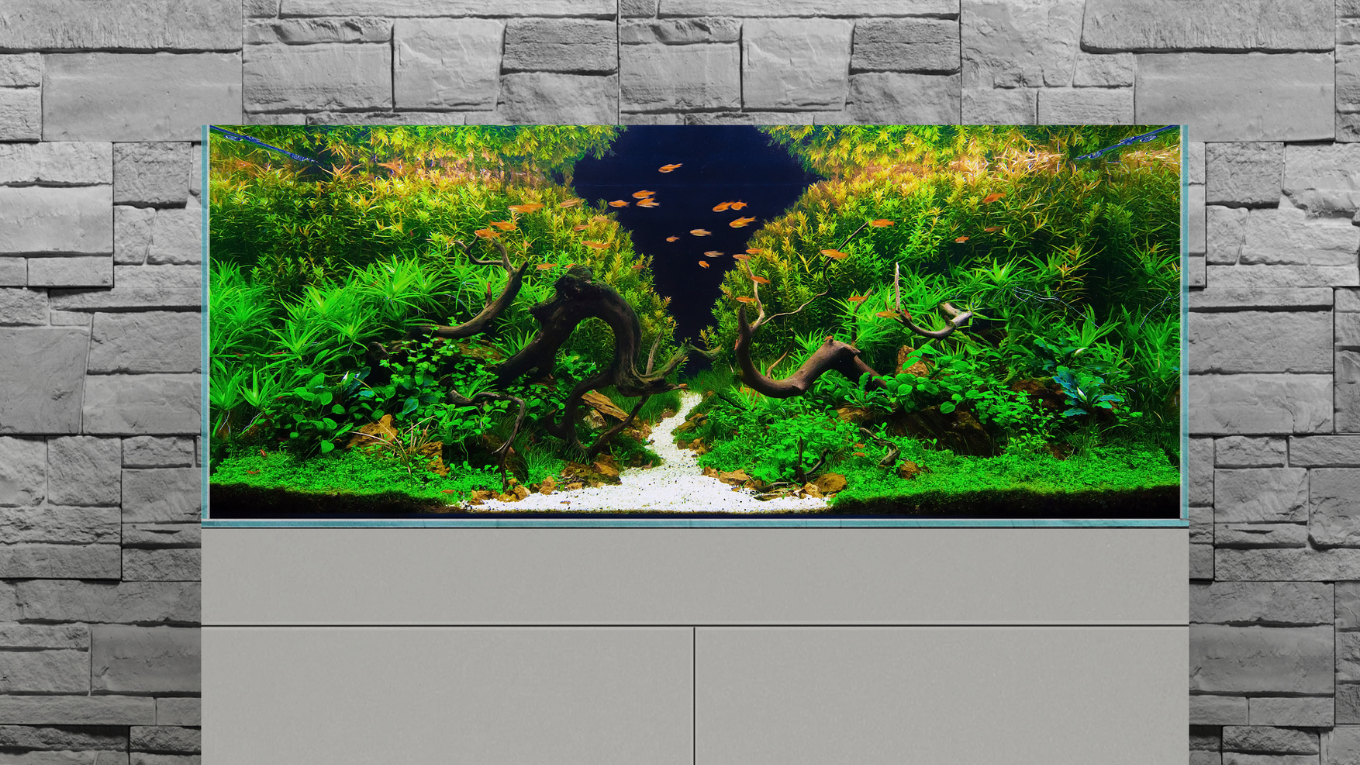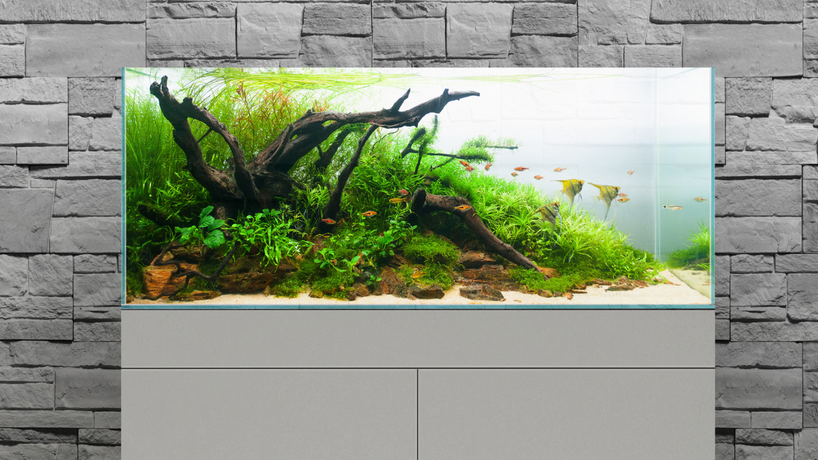- No products in the cart.
Beginner's Guide: How to Set Up a Planted Tank That Is Easy to Maintain and Looks Great
22
Jul
Aquascaping is an art form that uses live plants to create an underwater landscape.
The first step to creating a planted tank is to choose the right plants. Some plants need more light than others, so it is important to research which plants will do well in your aquarium.
Once you have chosen the plants, the next step is to prepare the tank.
This includes adding a substrate, such as gravel, and planting the plants. Aquascapers often use driftwood (I personally recommend the new Dragon Wood we recently brought in!) and rocks to create a natural-looking landscape.
The final step is to add water (and, eventually, fish).

What Kind of Equipment Will I Need to Buy for a Freshwater Planted Tank?
Before you start setting up your planted aquarium, it is important to gather all the supplies you will need.
This includes the plants, aquarium, substrate, and nutrients. As a beginner, it is important to choose aquarium plants that are easy to care for and do not require a lot of light. A good rule of thumb is to choose low to medium light plants. This will help prevent algae growth.
Another important factor to consider is the amount of light your aquarium gets. If it is in a location that gets a lot of sunlight, you may need to use a buffer to prevent algae growth.

What is Considered a Low-Tech Planted Tank?
A low-tech planted tank is an aquarium that is planted with live plants.
The plants are usually grown in a soil substrate, but they can also be grown in a gravel substrate or in an aquarium with no substrate.
The plants are usually kept under led lighting, and the watts per gallon of LED lighting is usually between 2 and 4 watts per gallon.
The most common plants used in low-tech planted tanks are java ferns, dwarf anubias, and freshwater ferns.

Are There Any Benefits to Having Aquatic Plants in an Aquarium?
Aquatic plants are beneficial in many ways.
They help to remove nutrients from the water, which can help to improve water quality.
They also provide shelter and hiding places for fish and other aquatic creatures.
Plants can also help to oxygenate the water and provide a natural filtration system.

How Do I Grow Healthy Aquarium Plants?
To have healthy aquarium plants, you need a few things.
- First, you need a good substrate for the plants to grow in. This should be something that is nutrient-rich and will help the plants to get the nutrients they need to grow.
- You also need good lighting for the plants. LED lighting is often a good option for aquarium plants because it provides the right amount of light for plant growth.
- Finally, you need to make sure that your aquarium has good filtration. This will help to keep the water clean and free of harmful chemicals that can damage the plants.
Are LED Lights Appropriate for a Planted Aquarium?
Yes, you can use LED lights for planted aquariums.
In fact, LEDs are becoming increasingly popular for this purpose because they are more energy efficient than traditional incandescent bulbs and they emit very little heat.
There are a variety of different LEDs on the market that are specifically designed for planted tanks, so you will need to do some research to find the best ones for your particular setup.
Generally speaking, the best LEDs for freshwater planted tanks are those that emit a full spectrum of light, including both cool and warm tones.

Do I Need to Cycle the Tank Before Adding Plants?
Adding live plants to your aquarium can help create a more natural environment for your fish, as well as improve water quality.
However, before adding live plants to your aquarium, you need to cycle the aquarium. This means allowing time for beneficial bacteria to grow in the aquarium so that they can break down fish waste and help keep the water clean.
Cycling an aquarium can take anywhere from 2-8 weeks, so be patient and don't add any plants until the cycle is complete.
You can also use Lifegard Aquatics Live Nitrifying Bacteria to instantly establish a working bio-filter in a newly set up aquarium.

What is the Right pH Level for a Planted Tank?
The ideal pH for a planted aquarium is between 6.5 and 7.5. This range is optimal for most aquatic plants and fish.
Tap water typically has a pH of around 7, so it is generally safe to use in a planted aquarium without adjustment. However, some live plants may prefer a slightly acidic or alkaline environment, so it is always best to research the specific needs of your plants before setting up your aquarium.
If you are going to use tap water, we recommend using Lifegard Aquatics Water Conditioner and Stress Reliever. It is a 100% natural and non-toxic way to detoxify tap water to make it safe for fish and other aquatic life. Most tap water contains chlorine or chloramines and heavy metals that are dangerous to fish and plants. Our water conditioner eliminates chlorine, chloramines, and heavy metals to make the water safe for aquatic plants.

What Type of Substrate Should I Use for a Planted Aquarium?
There are many different substrates that can be used in a planted aquarium, and it can be difficult to decide which one is best for your plants.
Aquatic plants need nutrients to grow, and the substrate is one of the main sources of these nutrients. Different substrates have different levels of nutrients, so it is important to choose one that is appropriate for the plants you are growing.
Beginner aquascapers often choose a substrate that is easy to grow rooted plants in. These substrates are rich in nutrients and provide a good foundation for plant growth. However, they can be more difficult to maintain than other substrates, so they may not be the best choice for beginners.
Other popular substrates include sand and gravel. These substrates are easier to maintain than soils, but they may not provide enough nutrients for some plants. If you choose a sand or gravel substrate, you may need to supplement your plants with additional fertilizer.
The best substrate for your aquarium will depend on the type of plants you are growing and your own personal preferences. There is no wrong answer when it comes to choosing a substrate, so experiment until you find the perfect one for your needs!

This Sounds Gross, But I Gotta Know... Do Fish Eat Poop?
Do fish eat poop?
It's a common question that people ask about fish. The answer is yes... and no. Some fish do eat poop, but most do not.
The ones that do usually have a special diet or are bottom feeders.
There are natural filtration methods in the wild that help keep the water clean, but in an aquarium, you need to stock your aquarium with fish that eat waste. These are called "cleaner fish" and they help keep the nitrogen cycle in balance.

Do You Still Have to Do Water Changes When You Run a Healthy Planted Tank?
There is some debate on whether or not water changes are still necessary in a planted tank.
Some people believe that as long as the plants are healthy and growing, there is no need to do water changes. Others believe that water changes are still necessary, but the frequency can be reduced.
Ultimately, it is up to the individual to decide how often to do water changes in a planted tank.









Nice Blog!! I installed these pond lights recently, these <a href=”https://kingsoutdoorlighting.com/collections/underwater-pond-lights “>underwater pond lights are a game-changer for my garden oasis! The mesmerizing glow adds a magical touch to my evening pond strolls.